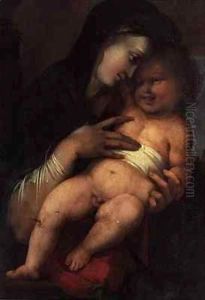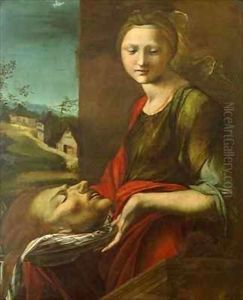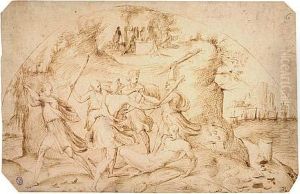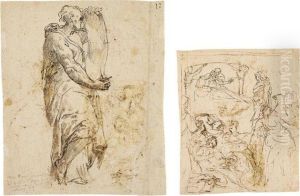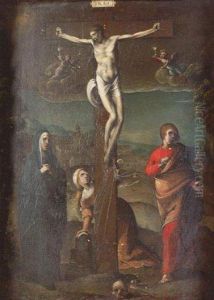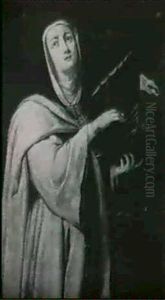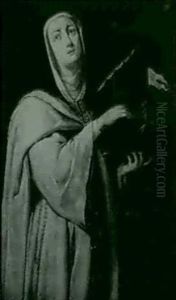Alonso Berruguete Paintings
Alonso Berruguete is recognized as one of the most prominent Spanish sculptors, painters, and architects of the Renaissance period. Born in Paredes de Nava, Spain, in 1488, Berruguete is often hailed as the father of the Spanish Renaissance, a period marked by the flourishing of arts and humanities under the influence of Italian Renaissance ideals. His father, Pedro Berruguete, was a notable painter of the Castilian school, which undoubtedly influenced Alonso's early interest and subsequent career in the arts.
Berruguete's initial training was in painting, but his artistic pursuits led him to Italy, where he was profoundly influenced by the works of Michelangelo and the Italian Renaissance masters. This experience was pivotal; upon his return to Spain, he began to fuse the Italian Renaissance style with Spanish artistic traditions, creating a unique blend that defined much of his work. Berruguete is particularly renowned for his work in sculpture, which often featured religious themes and reflected a dynamic expression of human emotion and dramatic realism.
In the early 1520s, Alonso Berruguete was appointed court painter and sculptor to King Charles I of Spain (later Holy Roman Emperor Charles V), a position that elevated him to the forefront of Spanish art and architecture. Among his most significant contributions during this time were his designs for the choir stalls of the Toledo Cathedral and his work on the tombs of Cardinal Juan Pardo de Tavera in the Hospital de San Juan Bautista in Toledo, which showcase his mastery in sculpting.
Berruguete's influence extended beyond his own works; he played a crucial role in the development of the Spanish Renaissance, inspiring a generation of Spanish artists and sculptors. His ability to imbue his sculptures with intense emotion and spiritual depth, combined with his innovative use of space and movement, marked a departure from the more static and idealized forms of the Italian Renaissance, contributing to the evolution of Spanish art. Alonso Berruguete passed away in 1561 in Toledo, leaving behind a legacy that cemented his position as a pioneering figure in the history of Spanish art.
